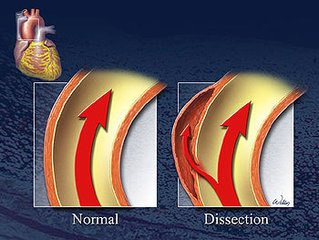Common problems with aortic dissection
- Normal Liver Cells Found to Promote Cancer Metastasis to the Liver
- Nearly 80% Complete Remission: Breakthrough in ADC Anti-Tumor Treatment
- Vaccination Against Common Diseases May Prevent Dementia!
- New Alzheimer’s Disease (AD) Diagnosis and Staging Criteria
- Breakthrough in Alzheimer’s Disease: New Nasal Spray Halts Cognitive Decline by Targeting Toxic Protein
- Can the Tap Water at the Paris Olympics be Drunk Directly?
Common problems with aortic dissection
Common problems with aortic dissection. What is an aortic dissection?
1. What is the role of the aorta?
The blood pumped by the heart is transported to the organs of the body through the aorta and its branches. The aorta next to the heart is called the ascending aorta. It enters the chest cavity and is called the thoracic aorta, passes through the diaphragm and enters the abdomen, and is called the abdominal aorta.
The aorta is the largest blood vessel in the human body. Its wall is composed of a three-layer structure of intima, media and adventitia, which ensures the smooth flow of blood in the blood vessels.
2. What is aortic dissection?
Aortic dissection refers to the rupture of the aortic intima caused by various reasons, and the blood flow enters the aortic wall, resulting in delamination of the aortic wall. The stripped arterial intima separates the aorta into two cavities.
“True lumen” refers to the original normal cavity of the aorta. “False lumen” is caused by abnormal blood flow from the “entrance” of the dissection into the aortic wall, and then penetrates at the farther end of the active wall to form an “outlet”. Some patients do not have an exit, forming a dissecting aortic aneurysm.
Aortic dissection is a very dangerous disease. The typical symptoms are sudden, sharp pain like a tear in the chest and back. Once the dissection ruptures, blood will squirt out of the blood vessel, threatening the life of the patient.
3. How to diagnose aortic dissection?
Clinically, sudden and severe chest and back pain, combined with high blood pressure, are difficult to control, and the electrocardiogram is normal. Aortic dissection should be highly suspected.
Immediately apply drugs to stabilize blood pressure and heart rate, and then perform imaging tests, such as CTA, to quickly find the location of the aortic dissection and provide guidance for the next treatment.
4. What is the difference between A and B sandwich layers?
The dissection involves the ascending aorta, regardless of the location of the breach, is type A; the dissection does not involve the ascending aorta, is type B, and the dissection involves the aortic arch, but the ascending aorta is also type B.
The mortality rate of aortic dissection is relatively high, especially for type A dissection. The mortality rate is calculated by the hour and must be treated against time. If the type B sandwich is stable, the mortality rate is relatively low.
5. How to treat aortic dissection?
The location of the type A dissection is in the ascending aorta, and most of them have to undergo thoracotomy. With the support of extracorporeal circulation, remove the damaged blood vessel and replace it with a new artificial tube. A peritoneal stent can be placed during the operation to open the distal descending aorta.
The type B dissection is in the descending aorta, and minimally invasive endovascular treatment is the main method. First, a very thin catheter guide wire is used to puncture the femoral artery at the base of the thigh into the blood vessel, deep into the heart, and pass through the true lumen of the aortic dissection.
Then guide the stent graft (artificial blood vessel) up through the femoral artery, release it accurately, cover the breach, anchor the proximal end to the normal blood vessel, and extend it to the distal end. This is the aortic B-type dissection endoluminal repair Surgery.
6. The tear of aortic dissection is very long, so should the stent be very long?
Aortic dissection is torn, and there may be multiple breaches. If there are two breaches and the distance is relatively far, the current repair method is to repair the proximal breach first, because the proximal breach is close to the heart and the pressure is high , It is easy to cause interlayer rupture. The fracture in the false cavity and the distal end will not be repaired temporarily.
(sourceinternet, reference only)
Disclaimer of medicaltrend.org




